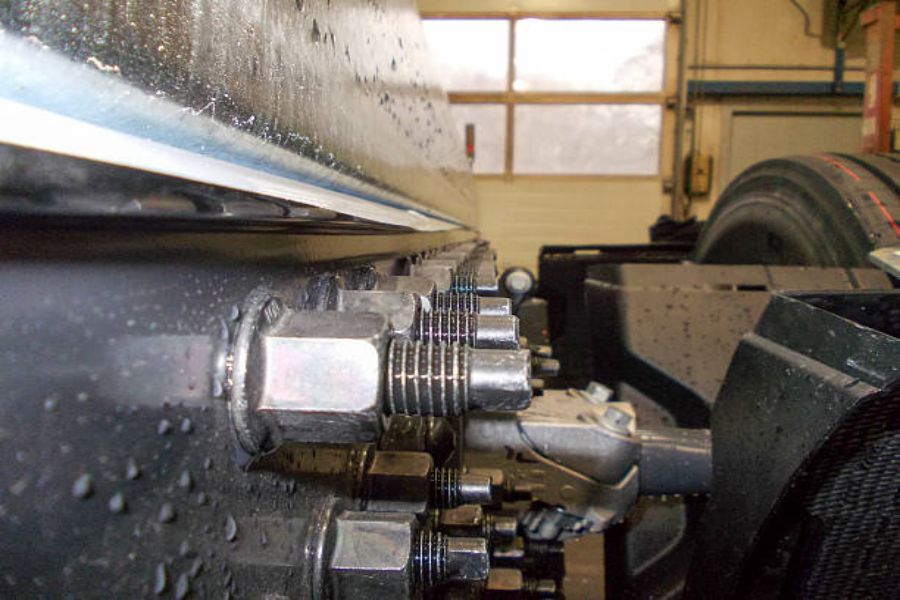The Rise of Metal Half Circle Buildings in Modern Architecture
Over the past few decades, there has been a significant shift in architectural design, with metal half circle buildings gaining popularity in both commercial and residential sectors. These unique structures offer a visually stunning and functional alternative to traditional square or rectangular buildings. In this article, we will explore the various aspects of metal half circle buildings, including their construction, benefits, and applications.
1. The Construction of Metal Half Circle Buildings
Metal half circle buildings are constructed using a combination of steel and other metals, which provide strength and durability to the structure. The frame of the building is typically made from steel beams, while the walls and roof are made from metal panels. These panels are often pre-fabricated and can be easily assembled on-site, making the construction process efficient and cost-effective.
2. The Benefits of Metal Half Circle Buildings
There are several advantages to choosing a metal half circle building over traditional building designs. Firstly, the curved shape of these buildings allows for better airflow and natural ventilation, reducing the need for artificial cooling systems. Additionally, the use of metal materials makes these structures highly resistant to fire, pests, and extreme weather conditions. Furthermore, the open and flexible interior spaces of metal half circle buildings provide ample room for customization and adaptation to various purposes.
3. Applications of Metal Half Circle Buildings
Metal half circle buildings have a wide range of applications across different industries. In the commercial sector, they are commonly used as exhibition halls, event venues, and sports arenas. The unique design of these buildings offers unobstructed views from every seat, making them ideal for large gatherings. In the residential sector, metal half circle buildings are often used as unique and contemporary homes, providing residents with a visually striking living space.
4. The Environmental Impact of Metal Half Circle Buildings
One of the key benefits of metal half circle buildings is their minimal environmental impact. The use of metal materials reduces the need for natural resources, such as timber, and minimizes waste during the construction process. Additionally, the curved shape of these buildings allows for better energy efficiency, as it maximizes natural light and reduces heat loss. This, in turn, can lead to lower energy consumption and reduced carbon emissions.
5. The Cost-effectiveness of Metal Half Circle Buildings
Contrary to popular belief, metal half circle buildings can be a cost-effective choice for construction projects. The use of pre-fabricated metal panels and the efficient construction process can significantly reduce labor and material costs. Furthermore, the durability and low maintenance requirements of metal buildings can result in long-term cost savings. Additionally, the open and flexible interior spaces of these buildings allow for easy adaptability, reducing the need for future renovations or expansions.
6. The Aesthetic Appeal of Metal Half Circle Buildings
Metal half circle buildings are often praised for their unique and modern aesthetic appeal. The curved shape and sleek metal exterior create a visually stunning and contemporary look that stands out from traditional buildings. These structures can serve as architectural landmarks, attracting attention and admiration from passersby. Whether used for commercial or residential purposes, metal half circle buildings offer a refreshing departure from conventional architectural designs.
7. The Structural Integrity of Metal Half Circle Buildings
Despite their unconventional shape, metal half circle buildings are known for their structural integrity and stability. The steel frame provides a strong and rigid structure that can withstand various external forces, such as wind and seismic activities. Additionally, the use of metal panels ensures a tight and secure building envelope, protecting the interior from water infiltration and other potential damages. These buildings are designed to meet stringent safety standards and can provide a safe and secure environment for occupants.
8. The Future of Metal Half Circle Buildings
As architectural trends continue to evolve, it is expected that the popularity of metal half circle buildings will only grow. Their unique design and numerous benefits make them an attractive choice for both architects and property owners. With advancements in technology and construction techniques, we can expect to see even more innovative and sustainable metal half circle buildings in the future.
9. The Versatility of Metal Half Circle Buildings
Metal half circle buildings offer incredible versatility in terms of design and functionality. The open and flexible interior spaces can be easily adapted to suit various purposes, from offices and retail spaces to recreational facilities and educational institutions. The curved shape of these buildings also allows for creative and unique architectural features, such as curved glass windows and skylights, further enhancing their aesthetic appeal.
10. Conclusion
Metal half circle buildings have emerged as a modern architectural marvel, revolutionizing the way we think about building design. With their unique shape, durability, and aesthetic appeal, these structures have become increasingly popular in various industries. Whether used for commercial or residential purposes, metal half circle buildings offer a harmonious blend of form and function, creating visually stunning and highly functional spaces for people to live, work, and play.

